The Collection of Amphibians and Reptiles contains over 112,000 cataloged specimens and is the largest collection of Texas amphibians and reptiles, with over 45,000 specimens from all areas of the state. Holdings from Latin America are extensive, totaling 36,361 specimens, with particularly strong collections from Mexico, Peru, Venezuela, and Argentina. Our database may be searched by clicking here. The cataloged specimens in the collection document the historical and current distribution, variability, and natural history of reptiles and amphibians across their ranges, and contribute much to our knowledge of our shared environment.
The holdings represent well the diversity of amphibians and reptiles worldwide, adding to the research and didactic value of these collections. There are representatives of all existing orders of reptiles and amphibians, and includes 2,506 species in 114 families, with outstanding taxonomic strengths in turtles, snakes, lizards, and important geographic representation of herpetofauna from Texas, SW USA, Mexico, and South America. The collection of amphibians and reptiles at Texas A&M is among the largest university-based herpetological collections at universities in the USA and is world renowned.
Research projects and field courses directed by Curator Emeritus Dr. James R. Dixon provided most of the specimens, and the collections continue to grow based on research, teaching, and networking with other institutions. The collection recently acquired the reptile and amphibian collections of West Texas A&M University, Midwestern State University, The University of North Texas, The Witte Museum, and the Houston Museum of Natural Science.
A significant portion of the use of data from the Collection of Amphibians and Reptiles is facilitated through our participation in global online databases including Global Biodiversity Information Facility (GBIF), VertNet, iDigBIo and GGBN. The Collection of Amphibians and Reptiles provides access to special-purpose datasets, such as CT scans available Morphosource. The Collection is currently partnered with the Texas Alligator Task Force, the Houston Toad Task Force, the US Fish and Wildlife Service, Texas Parks and Wildlife Department, Turtle Survival Alliance, the Bureau of Land Management, New Mexico Department of Game and Fish, and the National Science Foundation in projects that involve the study of reptiles and amphibians.
Recent Publications
CITES Secretariat. 2024. CITES Non-Detriment Findings Guidance. Modules 0-15. Consultants, rapporteurs, working group chairs, and TAG Chairs, who facilitated this work through the agreements reached by their respective groups: Adrian Lombard, Amy McDougall, Damian Wrigley, Dana Leaman, Daniel Natusch, Dilys Roe, Ernest Cooper, Flore Koumba Pambo, Julian McAlpine, Lee A. Fitzgerald, Matthew Gollock, Matthias Lörtscher, Mohammad Irham, Mona van Schingen-Khan, Oliver Tallowin, Patrick Aust, Ronald Orenstein, Roseline Mandisodza-Chikerema, Samuel Kingsley Oppong, Sara Oldfield, Sonia Dhanda, Thomasina Oldfield, Vincent Fleming, Xiaoge Ping, Yan Zeng. https://cites.org/eng/prog/ndf/index.php
Chyn K., Tracy J.L., Wright W., Varaela Volutra E., Fitzgerald L.A., Coulson, R. 2024. Where the toad crosses the road: multi‐method and cross‐taxa Texas herpetofauna roadkill modeling for conservation planning. Biodiversity and Conservation. https://doi.org/10.1007/s10531-024-02807-y
Fitzgerald, Lee A. 2024. Exploring the Wild Kingdom with Marlin. Chapter 43: pp 260-265. In. Hot Snakes and Lost Frogs: Herpetologists’ Tales from the Field. Edited by Martha L. Crump. Comstock Publishing Associates.
Parker, Mickey R., Fitzgerald Lee A. 2024. Using Life History to Predict Outcomes of Conservation Translocations of Herpetofauna. Animal Conservation. DOI: 10.1111/acv.13009

